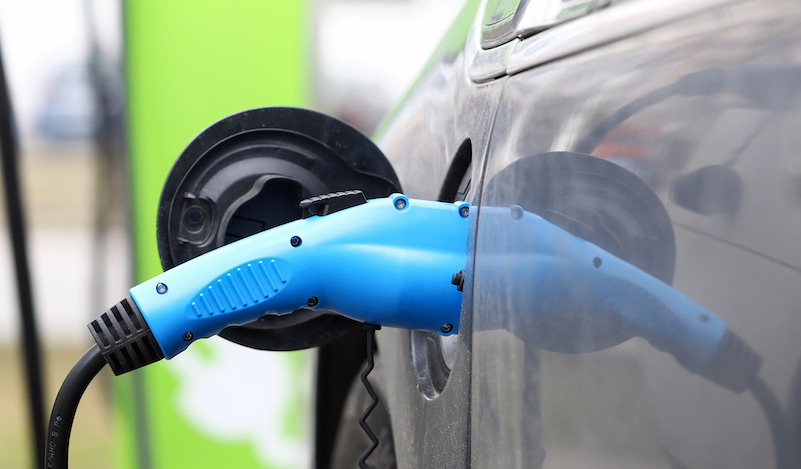
Penn Program on Regulation panel highlights policy options for accelerating the transition to electric vehicles.
In his first year in office, President Joseph R. Biden declared that the United States “must lead the world on clean and efficient cars and trucks.” He set a goal that half of all new passenger cars and light trucks sold would be zero-emission vehicles by 2030, a dramatic increase over 11 percent of sales today.
To meet this goal, the automobile industry will need to improve both the affordability and accessibility of electric vehicles (EVs), experts explained during a discussion convened last month by the Penn Program on Regulation (PPR). Part of Climate Week at Penn, the PPR panel discussion highlighted three key roadblocks to widespread ownership of EVs: supply chain woes, a dearth of affordable vehicle models, and a lack of urgency on the part of car companies to produce and sell EVs.
Legislative and regulatory action can address all three challenges, the panelists explained.
Manufacturing EVs remains a complicated business, noted panel member John Graham, a professor at Indiana University, and Simon Godwin, a government affairs director for Borgwarner, a green mobility technology company. Both Graham and Godwin observed how, after a decade-long decline in the cost of lithium ion battery packs, a key material in EV production, battery prices began increasing in late 2021, largely due to spikes in the prices of raw materials like lithium and cobalt.
Panel member Genevieve Cullen, the head of the Electric Drive Transportation Association, asserted that these conditions provide “the opportunity to reimagine” the supply chain for batteries. Graham agreed, praising new federal subsidies to support the development of an EV supply chain in the United States and to defray the cost of recycling batteries. But Graham argued that more needs to be done. He urged reforming the process of issuing permits both to accelerate mining and to allow the raw materials for batteries to be processed more quickly.
The panelists highlighted the lack of affordable vehicle models on the market. Even though battery prices overall have plummeted and charging infrastructure has expanded, the United States is “way behind the curve” in developing an affordable EV market, Graham argued. Comparing the share of EV ownership in the United States—7 percent—to that in Europe—approximately 25 percent—Graham suggested that the key difference stems from vehicle affordability. He underscored this point by explaining that the average sticker price of EVs is roughly 30 percent higher than the average price buyers today pay for gasoline-powered cars.
Cullen noted, though, that 70 different models are available today, at a range of price points and with a range of capabilities. Still, Graham countered by referencing the problem of “compliance cars”—cars potentially designed more to improve fleetwide fuel economy figures than to sell—and noting that several of the more affordable EV models touted by car companies make up only a minor share of total vehicle sales. Graham also pointed out that Congress has delayed the implementation of tax credits for EV purchases until a North America-based supply chain is developed.
Recent incentives included in the Inflation Reduction Act could represent a step in the right direction, panel members suggested. Graham identified two incentives in the Act designed to promote equity among EV purchases—new income and price caps on subsidies for EVs, and a new tax credit for EVs purchased in the used car market.
Furthermore, the U.S. Environmental Protection Agency (EPA) is piloting a program to make sure disadvantaged communities see the benefit of investment in EV infrastructure deployment plans, noted panel member Vicki Arroyo, who is EPA’s Associate Administrator for the Office of Policy.
Arroyo emphasized that transportation is the largest greenhouse gas-emitting sector in the United States and highlighted how EPA is working to deliver on the regulatory roadmap that President Biden established to tackle the problem. That roadmap has so far led EPA not only to revise its emissions standards for light-duty vehicles, but also to release a proposed rule that would set new, more stringent emissions standards for heavy-duty vehicles starting in model year 2027.
Godwin noted that, if the United States wants to use regulatory interventions to achieve a position of leadership on EV deployment, it could take a lesson from Europe, where EV penetration is more than three times as high. He attributed Europe’s success to the phase-in of aggressive fleet-wide emissions standards and to the widespread availability of subsidies from national governments to support EV purchases. Godwin also noted that several future regulations in Europe are expected to enable manufacturers to achieve a Europe-wide target that 100 percent of vehicles sold in 2035 must be zero-emission.
The EV transition is going to accelerate “given a number of drivers—pun intended,” concluded Arroyo. Despite panel members’ shared concerns about EV affordability and the other challenges ahead, all four experts expressed optimism about the future of the EV transition, especially if the legislative and regulatory solutions that they advocated will eventually materialize.
The PPR panel discussion was moderated by Shelley Welton, the Presidential Distinguished Professor of Law and Energy Policy at the University of Pennsylvania. A video recording of the discussion is available on PPR’s YouTube channel.



